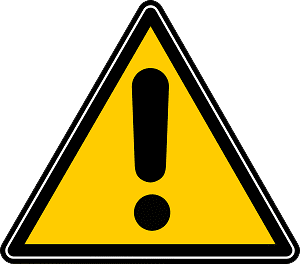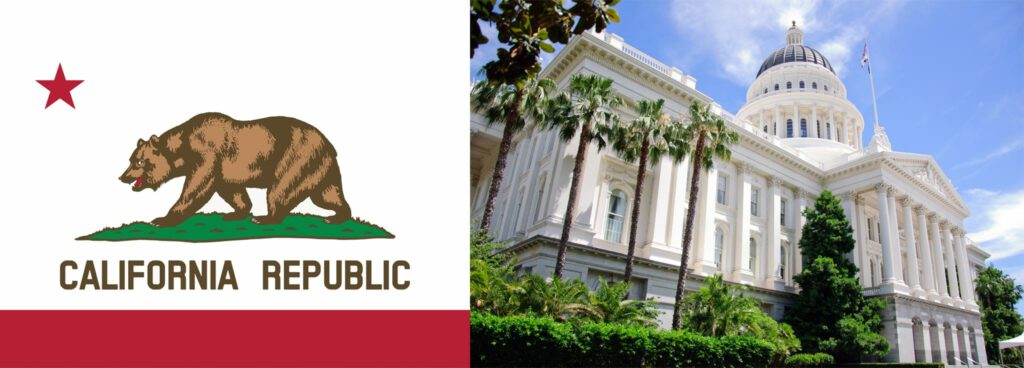Warning Label Changes Going Into Effect
California’s Office of Environmental Health Hazard Assessment (OEHHA) revised the regulations in Proposition 65 that cover “clear and reasonable warning” labels in August of 2016. The revisions to these label requirements mean that businesses must review their labeling practices and implement appropriate changes to remain compliant with Prop 65. While these changes have been in place since their initial adoption, they have remained unenforced for a two-year grace period afforded to businesses subject to Prop 65 regulation. Those two years are up, and enforcement of these new requirements is now imminent.
Effective August 30th, 2018, companies must observe the new “clear and reasonable warning” label requirements to remain compliant with Prop 65. The steep penalties imposed for noncompliance ($2500 per day, per infraction).
The changed regulations are numerous, but essentially break down into these categories:
Content Changes
New label formats have been included (overridden by specific exposure warnings — see below):
- Long Form:
 WARNING: This product can expose you to chemicals such as Furfuryl Alcohol and Bisphenol-A which are known to the State of California to cause cancer. For more information, go to www.P65Warnings.ca.gov.
WARNING: This product can expose you to chemicals such as Furfuryl Alcohol and Bisphenol-A which are known to the State of California to cause cancer. For more information, go to www.P65Warnings.ca.gov.
 symbol goes to the left of “warning”: a yellow equilateral triangle with a bold black outline and a bold black exclamation point in the middle. May instead use a white triangle if the label is printed in black and white. The symbol may not appear any smaller than “warning.”
symbol goes to the left of “warning”: a yellow equilateral triangle with a bold black outline and a bold black exclamation point in the middle. May instead use a white triangle if the label is printed in black and white. The symbol may not appear any smaller than “warning.”- WARNING: bold font in all capitals, followed by a colon
- “This product can expose you to chemicals including” [list one or more regulated chemicals included in your product] “which is [are] known to the State of California to cause” [“cancer” if chemical is listed as a carcinogen, “birth defects or other reproductive harm” if chemical is listed as a reproductive toxicant, “cancer and birth defects or other reproductive harm” if chemical is listed as both] “For more information, go to www.P65Warnings.ca.gov.”
- When warning of two different types of potential harm caused by at least two different chemicals, name one chemical and explain its harm, then the other (e.g. “chemicals such as Formaldehyde which is known to cause cancer and Perfluorooctane Sulfonate (PFOS) which is known to cause birth defects or other reproductive harm”)
- When only listing one chemical, exclude the phrase “chemicals including.”
- Short Form:
 Cancer and Reproductive Harm — www.P65Warnings.ca.gov.
Cancer and Reproductive Harm — www.P65Warnings.ca.gov.
- Same
 symbol in front of the same WARNING:
symbol in front of the same WARNING: - [“Cancer —” if the regulated chemical is listed as a carcinogen, “Reproductive Harm —” if the chemical is listed as a reproductive toxicant, “Cancer and Reproductive Harm —” if the chemical is listed as both]
- Do not have to name the specific chemical(s) in short form
- Same
Methods of Transmission
The changes clarify when, where, and how the content is to be displayed (overridden by specific exposure warnings — see below):
- Conspicuously placed such that the label is “likely to be seen, read, and understood by an ordinary individual” before exposure (purchase, entrance to an area, etc.) under normal circumstances
- Can appear:
- At the product’s point of display with a visible sign dedicated to its specific, compliant warning
- Automatically by way of an electronic device or process that shows the purchaser a compliant warning without their having to search for it
- As a visible label on the outside packaging of the product itself in long form
- As a visible label on the outside packaging of the product itself in short form wherein the font size used for the warning label is no smaller than the largest font size used for the rest of the consumer information, and never smaller than 6pt
- Must appear before completion of checkout on an internet purchase as either: a clearly visible box with a compliant warning in it (short or long form), set off from other content but conspicuous enough that the purchaser need not search through the website’s general content to find it; or by linking the prominently placed word “WARNING” to the compliant warning (short form or long form)
- Must appear in catalog purchases as a compliant label (short or long form) that is obviously associated with the product it pertains to
- Must appear in any languages that are used by accompanying consumer information labels/signage in addition to English
- Retailers are responsible for multilingual warning labels, as manufacturers cannot know the different languages in which the product will be advertised
Warning Responsibility
The update clarifies that the responsibility for displaying the appropriate warning labels generally rests with retail providers if another actor in the production process (manufacturer, producer, packager, importer, supplier, or distributor) does all of the following:
- Supplies a written notice that the product may expose consumers to a listed chemical (designated by exact name, description, or specific identifying information of both chemical and product)
- Supplies all necessary materials for displaying compliant warnings (i.e., labels, shelf signs, warning language, tags, etc.)
- Sends the above to the retailer and receives confirmation of their receipt either in writing or electronically
Specific Exposure Warnings
The revised regulation reviews current labeling practices for any of the following products, chemicals, or area exposures — compare against OEHHA’s specific labeling standards found here (see § 25607–25607.29 and § 25607.32–25607.33):
- Alcoholic Beverages
- Amusement Parks
- Dental Care and Emergency Medical Care
- Designated Smoking Areas
- Diesel Engines
- Food (including dietary supplements)
- Food and non-alcoholic beverages in restaurants
- Furniture
- Hotels
- Parking Garages
- Passenger Vehicles or Off-Road Vehicles
- Petroleum Products
- Prescription Drugs
- Raw Wood
- Recreational Vessels
- Service Stations and Vehicle-Repair Facilities
Choose ATS
It’s not too late to make sure that your company’s warning label practices are compliant with the revised requirements. Prop 65 warning label requirements may be changing, but you can stay on top of the situation before it becomes a problem. Please contact our lab if your company wants to test a product for various listed chemicals in compliance with Prop 65 — with the help of a toxicologist, we can help determine if your product requires a warning label.
ATS partners with manufacturers/importers, legal professionals, toxicologists, and consumer advocacy groups to ensure Proposition 65 compliance.



